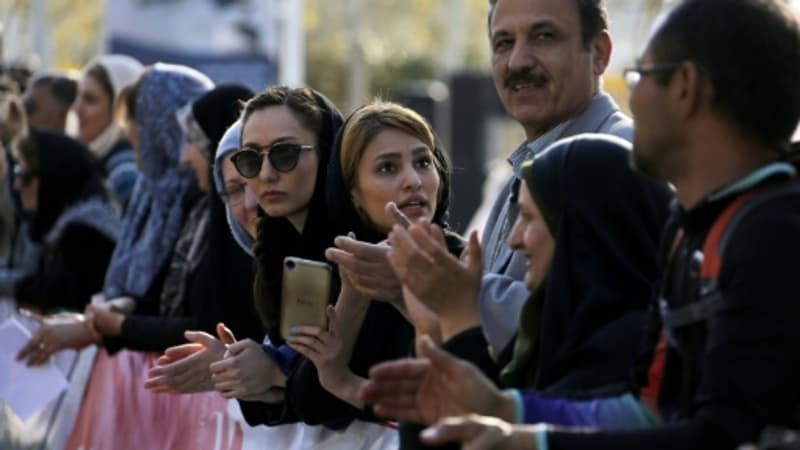Iranian authorities asked the courts and parliament on Saturday to review a 1983 law on mandatory veiling to find a way out of the protest movement that has killed hundreds of people over two and a half months.
Iran has faced daily protests since the September 16 death of Mahsa Amini, a 22-year-old Iranian Kurdish woman who was arrested three days earlier by morality police for violating the Islamic Republic’s dress code that requires women to wear headscarves in public.
Since then, Iranian women have led protests, some defiantly removing and burning their headscarves.
Clash between talkers and progressives
On Saturday, Iran’s attorney general, Mohammad Jafar Montazeri, announced that “parliament and the judiciary are working” on the mandatory headscarf issue, without specifying what could be changed in the law, especially since ultra-conservative President Ebrahim Raïssi, imposed the new clothing. restrictions this summer.
This is an ultrasensitive issue in Iran, in which two camps clash: that of the conservatives who rely on the 1983 law that makes the use of the veil compulsory and that of the progressives who want to leave women the right to choose if they want or not not to put it on.
The veil became compulsory in Iran four years after the 1979 Islamic Revolution. veil”.
Under a law in force since 1983, Iranian and foreign women, regardless of their religion, must wear a headscarf and loose-fitting clothing in public.
New restrictions from this summer
And since July 5, a law “on the veil and chastity of the country”, launched by President Raïsi, imposes new restrictions on women. The obligatory scarf must cover, in addition to the hair, the neck and shoulders.
But during a press conference on Saturday in Tehran, the head of state seems to have opened the door to possible changes: “Our constitution has solid and immutable values and principles (…), but there are methods to implement the Constitution that can be change,” he said.
Since Mahsa Amini’s death and the protests that followed, a growing number of women have uncovered their heads, especially in the upscale north of Tehran.
On September 24, a week after the protests began, Iran’s main reformist party urged the state to rescind the headscarf requirement.
many victims
Iran, which sees most demonstrations as “riots”, particularly accuses foreign forces of being behind this movement to try to destabilize the Islamic Republic.
A total of 448 protesters have been killed across the country since the start of the movement, according to the Norway-based NGO Iran Human Rights (IHR).
The Supreme National Security Council said on Saturday that “more than 200 people”, including civilians and security forces, had been killed in two and a half months of protests. On Monday, General Amirali Hajizadeh, of the Revolutionary Guard Corps, had reported more than 300 deaths.
Thousands of people have been arrested since the beginning of the movement. On Saturday, a new movie actress, Mitra Hajjar, was arrested at her home. She recently posted a video on her Instagram account about the October protests in Berlin in support of the movement in Iran.
Source: BFM TV


